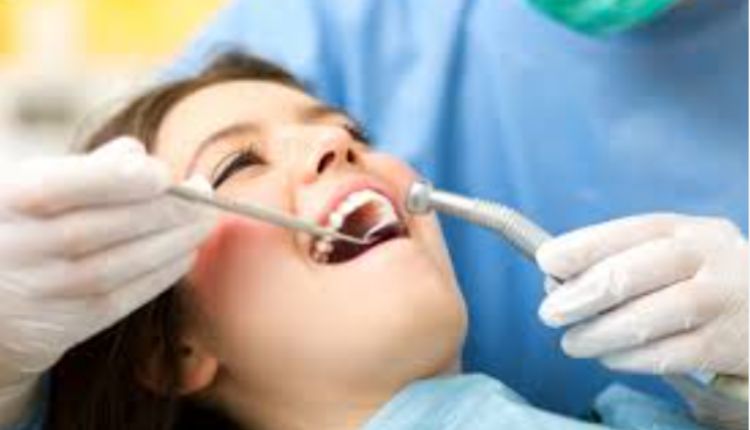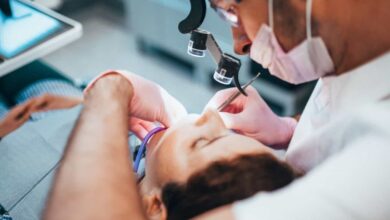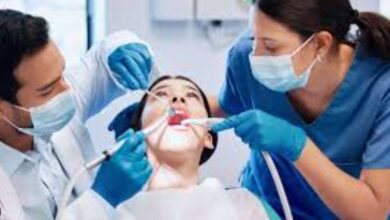Choosing The Right Orthodontist Hamilton

Finding the right orthodontist in hamilton is a big step towards achieving the smile you’ve always wanted. It’s not just about straightening teeth; it’s about finding a healthcare professional who understands your needs, answers your questions, and makes you feel comfortable throughout the entire process. From invisalign hamilton to traditional braces, the options can seem overwhelming, so doing your homework is key. You might also want to explore options like teeth whitening hamilton after your treatment.
Understanding Qualifications and Certifications
When choosing an orthodontist, it’s important to check their credentials. Here’s what to look for:
- Board Certification: This shows the orthodontist has completed additional training and testing beyond dental school.
- Education and Training: Look into where they went to school and what specific orthodontic programs they completed.
- Professional Affiliations: Membership in organizations like the American Association of Orthodontists can indicate a commitment to staying up-to-date with the latest advancements.
It’s easy to get caught up in the bells and whistles of a modern office, but don’t forget to check the basics. Make sure your orthodontist is fully qualified and certified to provide the care you need. It’s your smile, after all!
Evaluating Experience and Specializations
Experience matters, especially when it comes to something as complex as orthodontics. Consider these points:
- Years in Practice: How long has the orthodontist been practicing? More years often mean more experience with different cases.
- Types of Treatments Offered: Do they specialize in certain areas, like invisalign hamilton, or do they offer a wide range of options, including dental implants hamilton, dental crowns in hamilton, and dentures hamilton?
- Continuing Education: Are they actively involved in learning new techniques and technologies?
Considering Patient Reviews and Testimonials
What other patients say can be really helpful. Look for reviews on sites like Google, Yelp, or the orthodontist’s own website. Pay attention to:
- Overall Rating: What’s the general consensus? Are most patients happy with their experience?
- Specific Comments: Do patients mention the orthodontist’s bedside manner, the cleanliness of the office, or the effectiveness of the treatment?
- Before-and-After Photos: If available, these can give you a visual idea of the orthodontist’s work.
Types Of Orthodontic Treatments Available
So, you’re thinking about getting your teeth straightened? That’s awesome! The good news is that there are more choices than ever before when it comes to orthodontic treatments. Gone are the days when metal braces were the only option. Now, you can pick something that fits your lifestyle and budget. Let’s explore the different types of orthodontic treatments available in Hamilton.
Traditional Braces Options
Okay, let’s start with the classics. Traditional braces are still around for a reason—they work! They’re made of metal brackets that are glued to your teeth, and then connected with wires. The orthodontist adjusts these wires over time to gradually move your teeth into the right spot. Here’s what you should know:
- Metal Braces: These are the most common and usually the most affordable. They’re super durable and can handle pretty much any alignment issue.
- Ceramic Braces: These are similar to metal braces, but the brackets are made of a clear or tooth-colored ceramic material. They’re less noticeable than metal braces, but they can be a bit more expensive.
- Lingual Braces: These are placed on the inside of your teeth, so they’re completely hidden. They’re a good option if you want something discreet, but they can take some getting used to and might not be suitable for everyone.
Traditional braces are a reliable and effective way to straighten teeth, especially for more complex cases. They offer a tried-and-true method with predictable results, making them a solid choice for many patients.
Invisalign and Clear Aligners
Invisalign has become super popular, and for good reason. Instead of brackets and wires, you wear a series of clear, removable aligners that gradually shift your teeth. Here’s the deal:
- Virtually Invisible: The aligners are made of clear plastic, so they’re much less noticeable than traditional braces.
- Removable: You can take them out to eat, brush, and floss, which makes it easier to maintain good oral hygiene.
- Comfortable: No wires or brackets to poke your cheeks or gums.
Lingual Braces and Other Alternatives
Looking for something a little different? There are some other options out there too. Lingual braces are placed on the inside of your teeth, making them invisible from the outside. They’re a good choice if you want to keep your treatment a secret, but they can take some getting used to. Other alternatives include:
- Self-Ligating Braces: These braces use a special clip to hold the wires in place, which can reduce friction and make adjustments easier.
- Mini Braces: These are smaller than traditional braces, which can make them more comfortable and less noticeable.
- Temporary Anchorage Devices (TADs): These are small titanium anchors that are temporarily placed in the bone to help move teeth more efficiently in complex cases.
The Importance Of Initial Consultations
So, you’re thinking about getting your teeth straightened? That’s awesome! But before you jump into any treatment, it’s super important to have an initial consultation with an orthodontist. Think of it as a “meet and greet” for your mouth. It’s where you get to know the orthodontist, and they get to know your teeth. This initial consultation is key to making sure you find the best Orthodontist Hamilton has to offer for your specific needs.
What To Expect During Your First Visit
Okay, so you’ve booked your first appointment. What happens now? Well, usually, it’s a pretty chill experience. Here’s what you can expect:
- A Chat: The orthodontist will probably start by asking you about your dental history and what you’re hoping to achieve with treatment. Don’t be shy – tell them everything!
- An Exam: Next up, they’ll take a good look at your teeth, bite, and gums. They might even take some X-rays to get a better view of what’s going on beneath the surface.
- Photos: Get ready to smile! They’ll likely snap some photos of your teeth from different angles. These help them track your progress if you decide to go ahead with treatment.
- A Plan: Based on everything they’ve gathered, the orthodontist will start to outline potential treatment options. This is where you get to ask questions and discuss what’s right for you.
Questions To Ask Your Orthodontist
This is your time to shine! Don’t be afraid to ask anything that’s on your mind. Here are a few ideas to get you started:
- What treatment options do you recommend for my specific case?
- How long will the treatment take?
- What are the costs involved, and what payment options do you offer?
- What are the potential risks and benefits of each treatment option?
- How often will I need to come in for appointments?
Understanding Treatment Plans and Costs
So, you’ve got a treatment plan in hand. Now what? It’s time to really understand what you’re signing up for. Make sure you’re clear on:
- The Details: What exactly will the treatment involve? What kind of braces or aligners will you be using?
- The Timeline: How long is the treatment expected to last? Keep in mind that this is just an estimate, and things can sometimes change.
- The Cost: What’s the total cost of treatment, and what does that include? Are there any hidden fees?
- The Payment Options: Does the orthodontist offer payment plans or financing options? What about insurance coverage?
The initial consultation is more than just a formality; it’s a chance to build a relationship with your orthodontist and make sure you’re both on the same page. It’s about understanding your options, feeling comfortable with the treatment plan, and knowing that you’re in good hands. Don’t skip it!
Location And Accessibility Of Orthodontic Offices
When choosing an orthodontist, location and accessibility are super important. You want to find a place that’s easy to get to, whether you’re driving, taking public transit, or even walking. It’s not just about the initial consultation; you’ll have many appointments over the course of your treatment, so convenience is key.
Finding Convenient Locations in Hamilton
Finding an orthodontist close to your home, work, or school can save you a ton of time and stress. Here’s what to consider:
- Proximity to Home/Work/School: Look for offices in areas you frequent regularly. This cuts down on travel time and makes it easier to fit appointments into your busy schedule.
- Use Online Maps: Google Maps and other online tools can help you pinpoint orthodontists in specific neighborhoods and see how long it would take to get there from different locations.
- Check for Multiple Locations: Some orthodontists have several offices around Hamilton. This gives you more flexibility in choosing a location that works best for you.
Transportation Options and Accessibility
Not everyone drives, so it’s important to think about how you’ll get to your appointments. Accessibility also matters, especially if you or someone you’re bringing with you has mobility issues.
- Public Transportation: Check if the office is near bus stops or train stations. Hamilton has a decent public transit system, so this could be a viable option.
- Parking Availability: If you drive, make sure the office has ample parking. Street parking can be a hassle, especially during peak hours.
- Accessibility Features: Look for offices with ramps, elevators, and accessible restrooms. These features make the experience more comfortable for everyone.
Office Hours and Appointment Flexibility
Life is busy, and it can be tough to squeeze in appointments during regular business hours. Finding an orthodontist with flexible hours can make a big difference.
- Evening and Weekend Appointments: Some offices offer appointments outside of the typical 9-to-5 workday. This is great if you have a demanding job or school schedule.
- Online Scheduling: The ability to book appointments online can save you time and hassle. You can see available slots and schedule your visit without having to call the office.
- Emergency Appointments: Ask about the office’s policy on emergency appointments. Knowing you can get seen quickly if you have a problem can provide peace of mind.
Choosing an orthodontist based on location and accessibility might seem like a small thing, but it can significantly impact your overall experience. A convenient location and flexible appointment times can make your orthodontic treatment much less stressful and more manageable.
Insurance And Payment Options
Orthodontic treatment is a worthwhile investment, but understanding the insurance and payment options available can make the process much smoother. Let’s break down what you need to know to manage the financial side of perfecting your smile.
Understanding Insurance Coverage for Orthodontics
Navigating insurance can be tricky, but here’s the lowdown on what to look for when it comes to orthodontic coverage:
- Check Your Policy: Start by thoroughly reviewing your dental insurance policy. Look for specific clauses about orthodontic treatment. Some plans cover a portion of the costs, while others might have age restrictions or limitations on the types of treatments covered.
- In-Network vs. Out-of-Network: Find out if the orthodontist you’re considering is in-network with your insurance provider. In-network providers usually have negotiated rates with the insurance company, which can mean lower out-of-pocket costs for you. Going out-of-network might mean higher costs, but it could be worth it if you prefer a specific orthodontist.
- Pre-Approval: Many insurance companies require pre-approval before starting orthodontic treatment. This involves submitting a treatment plan to your insurer for review. Getting pre-approval ensures that your treatment will be covered as expected.
It’s always a good idea to contact your insurance provider directly to confirm your coverage details. Ask specific questions about deductibles, co-insurance, and any annual maximums that might apply to orthodontic treatment. This will help you avoid surprises down the road.
Flexible Payment Plans and Financing
If insurance doesn’t cover the full cost of treatment, don’t worry! Many orthodontists offer flexible payment plans and financing options to make treatment more accessible:
- In-House Payment Plans: Some orthodontic offices offer their own payment plans, allowing you to spread the cost of treatment over several months or even years. These plans often come with little to no interest, making them a great option.
- Third-Party Financing: Companies like CareCredit specialize in financing healthcare expenses, including orthodontic treatment. These options can provide low-interest or interest-free financing for a set period, helping you manage the costs more easily.
- Discounts: Ask your orthodontist about any available discounts, such as discounts for paying in full upfront or for having multiple family members in treatment.
Maximizing Your Benefits for Orthodontic Care
To get the most out of your insurance and payment options, consider these tips:
- Health Savings Account (HSA) or Flexible Spending Account (FSA): If you have an HSA or FSA, you can use pre-tax dollars to pay for orthodontic treatment. This can significantly reduce your out-of-pocket costs.
- Tax Deductions: In some cases, you may be able to deduct orthodontic expenses from your taxes. Consult with a tax professional to see if you qualify.
- Coordinate Benefits: If you have coverage under more than one insurance plan, coordinate your benefits to maximize your coverage. This can help you reduce your overall costs.
Maintaining Oral Health During Treatment
So, you’ve started your journey to a perfect smile with orthodontic treatment! That’s awesome! But here’s the thing: keeping your mouth clean and healthy during this time is super important. It’s not always easy, especially with braces, but trust me, it’s worth the effort. Let’s talk about how to ace your oral hygiene while undergoing orthodontic care.
Best Practices for Oral Hygiene with Braces
Alright, let’s get down to the nitty-gritty of keeping those pearly whites clean while you’re rocking braces. It’s a bit more involved than your regular brushing and flossing routine, but totally doable. Here’s the lowdown:
- Brush after every meal: Seriously, every single time you eat. Food particles love to get stuck in braces, and that can lead to plaque buildup and cavities. Carry a travel toothbrush and toothpaste with you.
- Floss daily: I know, I know, flossing with braces sounds like a nightmare. But it’s a must! Use floss threaders or interdental brushes to get between the wires and teeth. It takes practice, but you’ll get the hang of it.
- Use fluoride toothpaste and mouthwash: Fluoride helps strengthen your teeth and protect against decay. A fluoride mouthwash can reach those hard-to-reach areas.
- Consider a water flosser: These are great for blasting away food particles and plaque around your braces. They’re easy to use and can make a big difference in your oral hygiene.
- Check your work: Use a mirror to make sure you’ve removed all the food and plaque. Don’t be afraid to spend extra time on those tricky spots.
Dietary Considerations While in Treatment
Okay, let’s talk about food. What you eat can impact your braces and your teeth during treatment. Some foods can damage your braces, while others can increase your risk of cavities. Here’s what to keep in mind:
- Avoid sticky and chewy foods: Gum, caramel, taffy – these are all no-nos. They can get stuck in your braces and pull them off.
- Say no to hard foods: Hard candies, nuts, and ice can break your brackets or wires. Be careful when eating these types of foods.
- Cut food into small pieces: This makes it easier to chew and reduces the risk of damaging your braces. Think bite-sized pieces of fruits, vegetables, and meats.
- Limit sugary drinks and snacks: Sugar feeds bacteria in your mouth, which can lead to plaque buildup and cavities. Opt for water, unsweetened tea, or sugar-free snacks.
- Be mindful of staining foods: Coffee, tea, and red wine can stain your teeth, especially around the brackets. Rinse your mouth with water after consuming these beverages.
Maintaining a balanced diet is also important for your overall health. Make sure you’re getting enough vitamins and minerals to keep your teeth and gums strong.
Regular Check-Ups and Adjustments
Don’t skip those appointments! Regular check-ups with your orthodontist are crucial for monitoring your progress and making adjustments to your braces. Here’s what to expect:
- Your orthodontist will check your braces: They’ll make sure everything is in good working order and that there are no loose brackets or wires.
- They’ll adjust your wires: This is how your teeth are gradually moved into the correct position. It might feel a little uncomfortable, but it’s necessary for your treatment.
- They’ll monitor your oral hygiene: Your orthodontist will check for signs of plaque buildup, cavities, or gum disease. They’ll also give you tips on how to improve your oral hygiene routine.
- They’ll answer your questions: Don’t be afraid to ask questions about your treatment or any concerns you have. Your orthodontist is there to help you.
- They’ll schedule your next appointment: Regular appointments are essential for keeping your treatment on track. Make sure to schedule your next appointment before you leave the office.
Post-Treatment Care and Retainers
So, you’ve finally reached the end of your orthodontic journey in Hamilton! All that time with braces or aligners has paid off, and you’ve got a fantastic new smile. But here’s the thing: the journey isn’t completely over. Post-treatment care is super important to keep your teeth in their new, perfect positions. This is where retainers come in, and they’re honestly your best friend now.
Importance of Retainers After Braces
Think of your teeth like plants that have just been moved. They need time to settle into their new spots. Retainers are what hold them steady while the bone around them gets used to the new arrangement. If you skip wearing your retainer, your teeth can shift back, and nobody wants that after all that effort!
Here’s why retainers are so important:
- Prevent Relapse: Teeth have a memory, and they’ll try to go back to where they were before. Retainers stop this from happening.
- Stabilize Your Bite: Your bite needs time to fully settle after braces. Retainers help keep everything aligned.
- Maintain Your Investment: You’ve invested time and money into your smile. Retainers protect that investment.
Long-Term Care for Your Smile
Okay, so you’re wearing your retainer like a champ. What else can you do to keep your smile looking great for years to come? Good oral hygiene is still key. Brush and floss regularly, and don’t forget to see your dentist for check-ups. Also, be mindful of things that can stain or damage your teeth, like coffee, red wine, and hard candies.
Here are some tips for long-term care:
- Regular Dental Check-ups: Keep seeing your dentist for cleanings and exams.
- Good Oral Hygiene: Brush and floss every day.
- Avoid Staining Foods: Limit coffee, tea, and other staining foods and drinks.
- Protect Your Teeth: Wear a mouthguard if you play sports.
Monitoring Changes After Treatment
Even with retainers, it’s a good idea to keep an eye on your teeth. Sometimes, small shifts can happen over time. If you notice anything changing, don’t panic! Just give your orthodontist a call. They can check things out and make any necessary adjustments.
Here’s what to watch out for:
- Shifting Teeth: Notice any gaps or crowding?
- Changes in Bite: Does your bite feel different?
- Retainer Fit: Is your retainer feeling tight or loose?
Wearing your retainer is a long-term commitment, but it’s worth it to keep your smile straight and healthy. Think of it as part of your daily routine, like brushing your teeth. With a little care and attention, you can enjoy your beautiful smile for many years to come.




